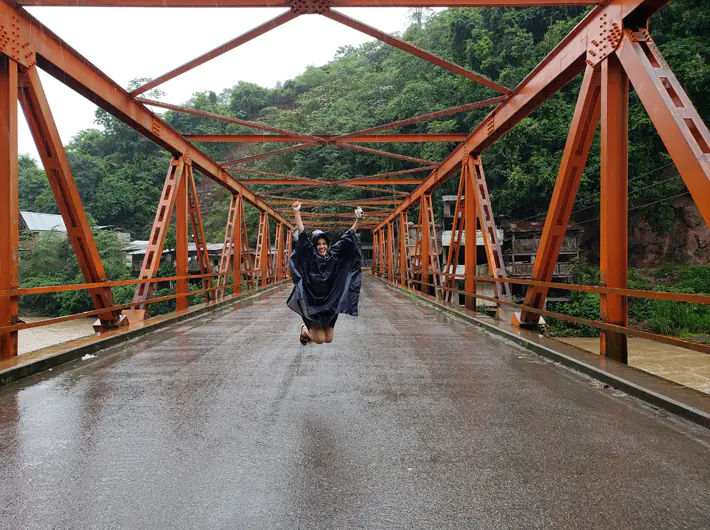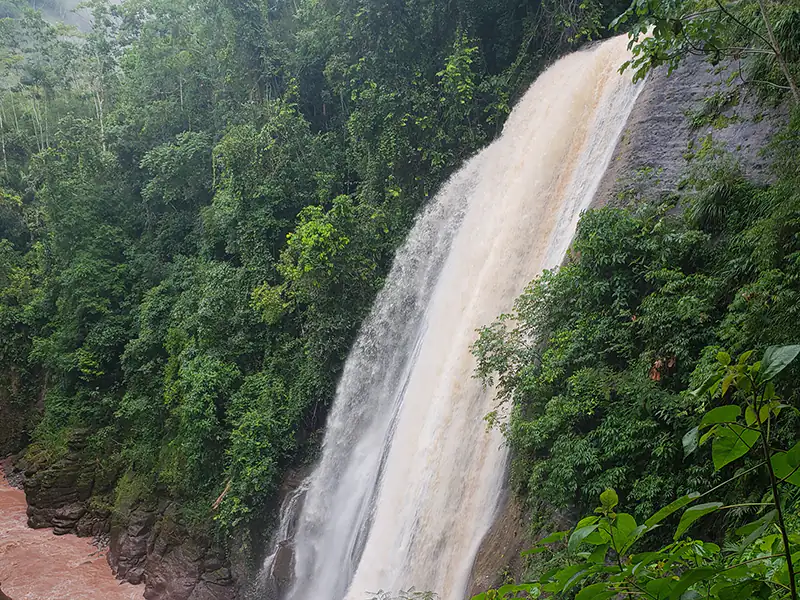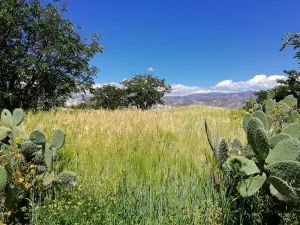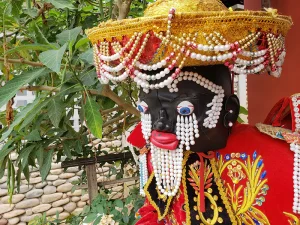Traveler friends, we have reached the final part of that first trip of the year 2019, from which I learned a lot and which left me with many experiences. The Central Jungle is one of those places that I was dying to see, being so close to Lima, I had never visited it.
Now I can say that I will not return just once, but several more times, because I was left with the desire to continue exploring it and reaching remote places in the Peruvian jungle. And something that connects me, these days, with those memories of the central jungle, is the smell of fruit: oranges, lemons, pineapple, tangerines, smells that immediately transport me to the middle of the jungle, surrounded by green mountains and rivers. mighty. Let me tell you about the wonders I found, in the jungle that joins the region of Junín and Pasco.
The wonders of Mother Earth in the central jungle
Thanks to the Angel Adventure agency I was able to get to know beautiful places in the central jungle, I emphasize, above all, the work of my driver and guide: Shanthy Ramirez, who allowed me to be her co-pilot and listen to many stories of the places we saw when we were en route. .
The first place we visited was Kimiri BridgeIn fact, I visited this place several times, it is like the starting point of all the tours. Before crossing the bridge there are different places where they sell homemade ice cream… What ice cream! Creamy and fruity! With the heat of the jungle they will want to repeat! The Kimiri bridge was built in 1901 to connect different districts of Chanchamayo, and was built on the river of the same name. The structure is metallic and the floor is made of wood, and the truth is that I really liked crossing it because it is as if the river and the mountains were welcoming you to the Central Jungle.
Continuing the route, we visit an Ecolodge called Tinkuy , which most tourist agencies enter, because it is also a viewpoint that shows us the union between two rivers: the Chanchamayo River and the Paucartambo River, which when joined together form the Perené River. Precisely, the name of the place Tinkuy, is a Quechua word that means ‘encounter’, referring to this union of rivers. The place is very beautiful and relaxing, I fell in love with the landscape while we tasted macerated different fruits from the region, in pisco.
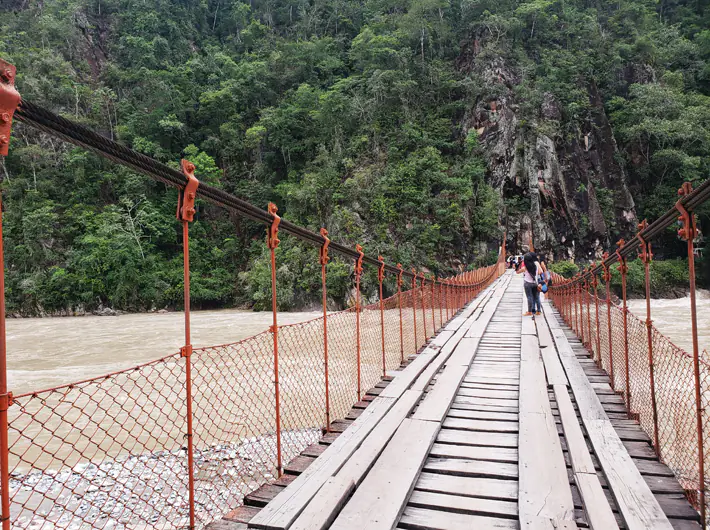
Without a doubt, the beauty of the area lies in its nature, and part of it is the waterfalls that we can find just 1 hour from Chanchamayo: the Bayoz and Velo de la Novia waterfalls . To visit them, you arrive at the town of Perené where you will see many snack stalls such as grilled ripe bananas, local fruits, water, etc. From there you have to walk uphill and very carefully, as it is slippery, until you reach the Bayoz waterfall. It is a waterfall of almost 60m in height and that falls in a staggered manner. When you go up you feel all the breeze that this fall forms, which is very refreshing. If you bring your swimwear, you can take a dip in it, but yes, the water is freezing! If you see elderly people or children, please help them to get down, as the place is slippery, they can fall or have an accident.
When I was going back to the starting point, we got caught in a heavy rain! that completely soaked us in less than 1 minute. We still had to visit the other Velo de la Novia waterfall, but only some of us dared to walk to it, in a walk of almost 15 minutes. under the rain. Always remember to take your rain poncho with you. So I began to walk very carefully until I reached the viewpoint. What a beauty, I had never seen anything like it in my life, the walk in the rain was 100% worth it. Seeing the 120m drop and the ocher river that forms at the bottom is a unique experience. Honestly, it was a very emotional moment, and the sound of water complemented it. I thanked mother earth for giving us that show, and although I know there are countless waterfalls in Peru, each one of them is unique, and this one is, without a doubt, one of my favorites. I want to return to this place.
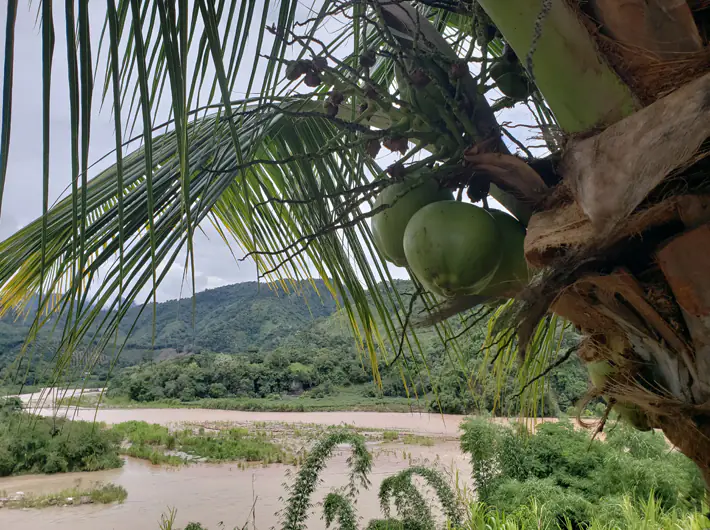
The Indiana Jones Tour: Safety first!
I found out about this tour through several videos I saw on Youtube and the truth is that over the years, I have become more reluctant to do adventure activities. But, at the same time, I always tell myself: Do it! Dare yourself! And that happened on this occasion, in fact, I always seek to fill myself with experiences and then have stories to tell my foreign and national tourists.
That day, we crossed the Kimiri Bridge to start a 40 min walk to the Burgundy district, the views were beautiful and we learned about different fruit trees along the way. After that time, we arrived at a small family cabin where we rented rubber boots (wear long stockings! Otherwise, you could injure your calf) and where they gave us safety instructions and showed us on a map the route to be taken. was going to do. So far so good… but then the guide, a very young boy, told us that we would go down to the river to start the adventure. The idea was that we were going to walk inside the river and climb rocks, waterfalls and small waterfalls, for 3 or 4 hours, using ropes. So, obviously, a basic safety element that cannot be missing was the helmet. Three girls and I asked for the helmet because 1, safety first, and 2, we had already paid for it in the price of the tour. But the guide, he only had 3 helmets for a group of 15 people and the helmets were broken, they could not be adjusted. I felt a little outraged not only because I didn’t have a helmet, but because in the group there were teenagers and adults between 50 and 60 years old who had to wear one. The guide mentioned to us that the river was low and that we did not have to worry about anything and encouraged us to do the tour anyway.
I’m not lying to you, I hesitated a bit to do the tour… but, in the end, I decided to do it anyway, obviously if something happened, I was already at my own risk. We start with the walk along the river, at the beginning the water seems frozen! but then you don’t even feel it. To this tour yes or if you have to go with swimwear, shorts or comfortable pants, and a polo shirt. By sectors it was somewhat difficult, and almost halfway through the route the current came with much more force that it even knocked down a ladder that we had to climb to reach another level of a waterfall. Some helped themselves with a rope to climb and others, we climbed some huge and staggered rocks to reach the top. At that moment I realized that, indeed, the use of helmets is 100% necessary for everyone, including the guide who did the most work.
Overall it was a fun experience and I would do it again if they give me all the necessary safety gear. Traveler, this topic is very important, every time you hire a service, get good advice, if you see it on a website, read the comments, and if you do adventure tourism, all the implements have to be 100% operational, in this way we avoid accidents and you can even enjoy your experience more knowing that you are safe.
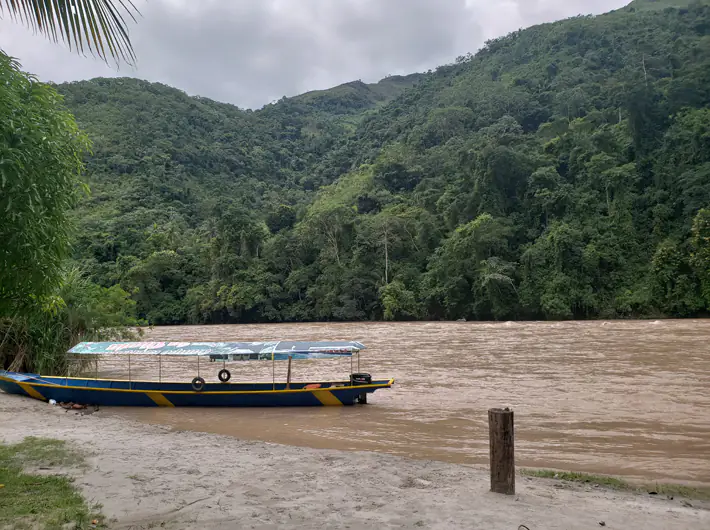
Visiting an Asháninka village
Although my visit to the village was short, I learned a lot about them and had the opportunity to talk with them. The Asháninka community in Pampa Michi is made up of 25 families and is the Amazonian community closest to Lima, the capital of Peru. This village lives from agriculture and also from tourism. Every day they welcome many tourists with a big smile, invite them to dance with them and also tell them about their customs.
The Asháninka community preserves their clothes called ‘Cushma’ and also the way their homes are built, with wooden structures and palm tree roofs. Music is what gives them joy, so they have their own musicians who from a very young age learn the rhythms of the jungle, rhythms that when one listens to them automatically our body begins to move. What I really liked about them is the respect they have for nature and all its elements. For example, to obtain the wood to make their homes, they perform a ritual of gratitude to Mother Earth for having given them permission to take their trees in a controlled manner. The river provides them with the pure water they need to live, and their farming areas provide them with the food with which they grow strong and healthy.
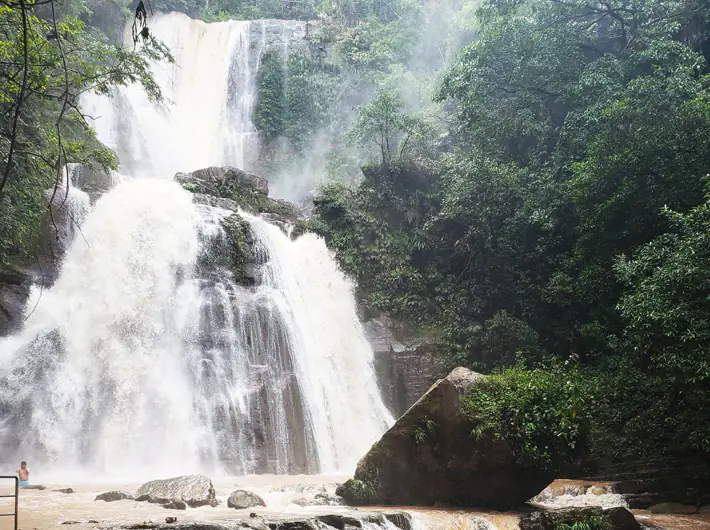
In love with Oxapampa!
This is the place I was so looking forward to visiting during my visit to the Selva Central and it is also the last place I visited on this two-week trip. Oxapampa, is located two and a half hours from Chanchamayo, you pass through different towns to get there, for example, through the town of Paucartambo with its contrasting orange bridge, and on the way you also have some activities that you can do, for example Canopy ! 500m long, 40m high, it’s like you’re flying through the treetops! What do you think… did I dare or not? Yes friends! I did it! I couldn’t miss this opportunity to fly. It was an unforgettable experience! And done in the morning, so it was a fun way to finish waking up.
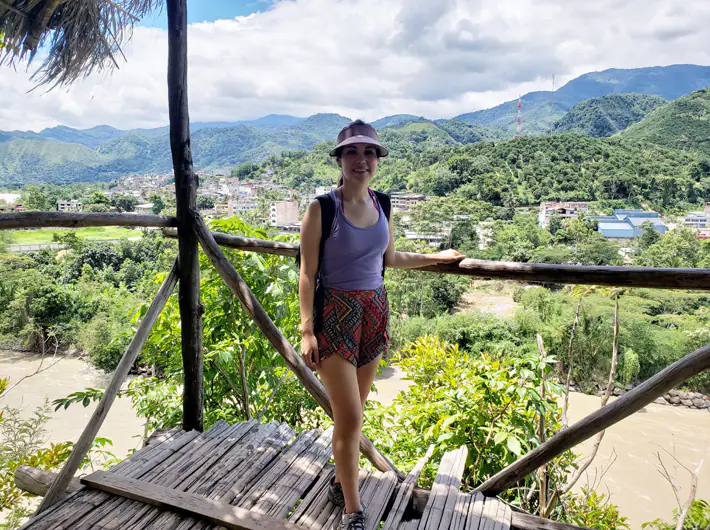
Oxapampa no longer belongs to the Junín region, but to the Pasco Region and it is through it that you can reach other areas of the central jungle such as Villa Rica, Prusia, Pozuzo, etc. All of them and Oxapampa have something in common, and that is that these cities are inhabited by Austrian and German settlers and their descendants. Which is super noticeable! You see it in the way the city develops, in its activities, the main ones being livestock and coffee cultivation, in music and dance. And, likewise, you see it present in its architecture! Oxapampa has a different architecture from other cities in the jungle, here most of the houses are made of wood and have a set of slopes on their roofs. Similarly, most of them have exposed wood and others have been painted in subtle colors that contrast gently with nature.
In Oxapampa, we visited a place called ‘El Tirolés’ where we had a tasting of coffee, cheese and other local products. Here we also learned to dance some of the dances of the Austro-German settlers. It was so much fun!! And obviously I also dared to dance, here I have the proof.

The residents of Oxapampa told me that every year they receive more visitors, so they have already developed a whole tourism plan for them, they also encourage them to visit other cities such as Pozuzo and Prussia.
I will return to Oxapampa many times! To continue knowing your surroundings and continue appreciating your perfect heaven.
Useful data:
Altitude: 700 – 2000 meters above sea level
Access routes: Land and air (Jauja airport)
Holiday Dates:
– February: Carnival of the Central Jungle.
– June: Festivity of San Antonio de Padua in Pozuzo.
– June 2: Villa Rica celebrates the recognition as Oxapampa Ashaninka Yanesha Biosphere.
– June 20 to 30: Central Jungle Tourist Week.
– June 23 to 29: Citrus Festival.
– June 24: Coffee Festival.
– August: Festival of orchids and flowers, Santa Rosa patron saint festival, Pozuzo livestock and ecotourism festival and Oxapampa patron saint festival.
For more information about this destination, go to: https://selvacentral.com.pe/chanchamayo/
